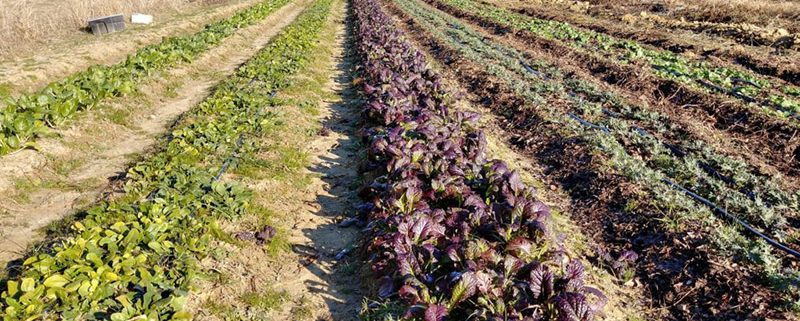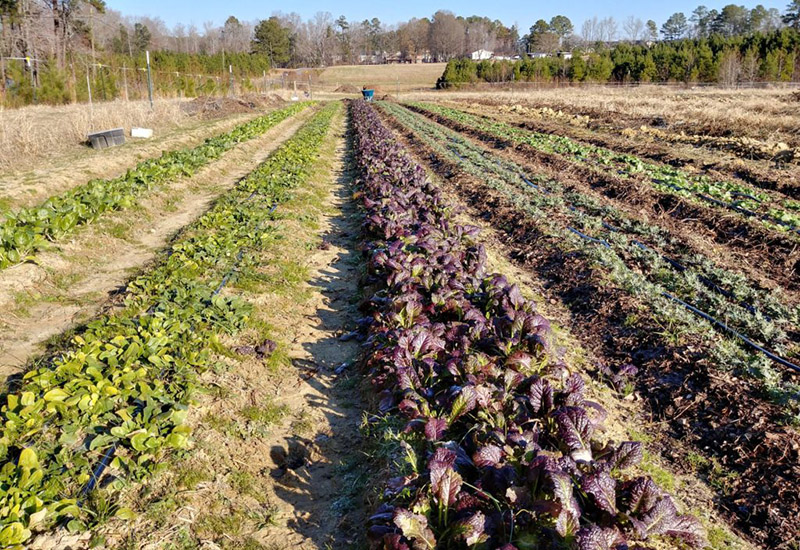How the Town of Cary Wants to Tackle Climate Change
Cary, NC – With climate change and carbon pollution now a dominant topic in the United States, the Town of Cary is reviewing ways to reduce carbon dioxide emissions, with a goal to reduce emissions by 100 percent in the next 20 years.
Cary’s Role in Climate Change Mitigation
At the Thursday, October 10, 2019 Cary Town Council meeting, Town Council unanimously voted to accept recommendations from Cary’s Environmental Advisory Board (EAB) on carbon reduction. Now, it’s up to Town Council to review those recommendations and provide guidance to Cary staff on what to do next.
The recommendations deal specifically with carbon dioxide, one of the most common greenhouse gases in the atmosphere and the main industrial contributor to climate change. Carbon dioxide in the atmosphere traps heat from solar radiation, increasing the temperature of Earth’s surface, creating an imbalance in the global climate and causing a myriad of extreme ecological disasters, as outlined in the United Nations’ Intergovernmental Panel on Climate Change.
Since the start of the Industrial Revolution in 1750, concentrations of carbon dioxide in the atmosphere have increased by nearly 50 percent, and are currently at 415 parts per million. Carbon dioxide is not the only chemical that traps and reflects heat, as methane, hydrofluorocarbons, nitrogen trifluoride all reflect heat far more than carbon dioxide, though they are present in smaller quantities.
The EAB’s recommendations call for reducing carbon air emissions by 25 percent by 2025 and 100 percent by 2040. These are community-wide goals, not only for Town of Cary buildings and facilities, meaning private citizens will need to address their carbon footprint as part of these plans as well.
“Staff is currently working on a community-wide carbon emissions baseline, which is the first step identified in the EAB recommendations. The baseline will help the town assess which areas have the greatest opportunity for impact – for instance, transportation, buildings, etc.,” said Emily Barrett, sustainability manager for the Town of Cary. “We will also work with a multi-departmental staff team and the EAB to refine an action plan.”
Where Can Cary Reduce Carbon?
Establishing those baselines and metrics is one of the seven recommendations made by the EAB.
Another of these recommendations is that all new buildings in Cary should use as much energy as they generate, meaning energy efficient construction (windows, insulation, HVAC systems, etc.) while also incorporating renewable energy production, such as solar panels on walls and roofs. Also, in construction, the recommendations calls for Cary to “use the site planning process to encourage retention of stands of trees and high-value habitats, with an emphasis on contiguous tree canopy over preservation of solitary champion trees.”
Related to sustainable building is the use of green infrastructure in the recommendations. This includes restoring Cary’s soils and floodplains while building up the tree canopy to sequester carbon dioxide. The recommendation does not stop at protecting existing forests but suggests finding way to restore forests at risk and planting new forests as well. Earlier this year, Town Council also voted on the EAB’s recommendations for Cary’s tree canopy, including hiring an urban forester.
On a similar subject, the EAB’s recommendations include food waste and agriculture in Cary, including not only building up local food production and local farmers to reduce the distance food has to travel but also finding ways to cut down on food waste, such as “building a network of local resources and programs to reallocate unwanted food.” For residents, one recommendation is to replace front lawns with urban farming or victory gardens, cutting down on the pollution created by grass lawns.
Another way the recommendations speak directly to residents is through transportation changes – namely, finding ways for people to get out of their cars and walk or bike more. While Cary has already invested in greenways, the recommendations call for this to be expanded, as well as “co-locating a mix of affordable housing, retail and business and open space” to areas redeveloped for bike, walking and public transportation access. The recommendations even suggests exploring car-free, pedestrian-only zones, which has been adopted in some major cities such as Brussels in recent years. Also, the recommendations call for the Town of Cary to find ways to incentivize electric, zero emission vehicle usage through town infrastructure.
“The carbon reduction goals that are being passed by communities and companies are bold and aspirational,” Barrett said. “As Jack Smith, Council liaison to the EAB, said, ‘This is an opportunity for Cary to be bold and be smart. We are proud of the EAB’s work because it will help move us forward.'”
Those final two recommendations call for Cary to advocate for these carbon reduction goals at the state and national level and also educating town residents on not only the importance of climate change action but what they can do to reduce emissions.
“The Town involves its citizens and stakeholders in all types of planning activities with public information,” the EAB’s report reads. “An educational campaign on carbon reduction and carbon sequestration will be needed to successfully reach our goals and engage our citizens.”
The entire list of recommendations and details is available on the Town of Cary website.
Story by Michael Papich. Photos by Michael Papich, Good Hope Farms and Jessica Patrick.







We are grateful to our fellow citizens who served on the Environmental Advisory Board, spending long hours crafting a science-based set of carbon reduction recommendations for the Town Council. We attended several meetings and were impressed by the collegiality among members and the dedication of efforts. Kudos! We are likewise grateful to the Cary Town Council members. They voted unanimously to accept all 7 recommendations. Thank you for your leadership!
Now what? How about tapping some of the $225 million in bond monies approved by citizens last month? Both our Park System and our Transportation System are rich in opportunities to maximize sustainability and resiliency. We have now have the means and the expertise to turn our Downtown Park and new parking deck into national models of sustainability. Solar roofs? You bet. Exemplary water management? Certainly. Charging stations for electric vehicles? Of course. Trees and native plantings for carbon sequestration and in support of native pollinators? Absolutely.
How good to see that Cary is addressing the important issues of climate change and the environment!
I hope that Cary can be a leader in setting an example for the state and the nation. Now I wonder:
Does our new library have a solar roof? Is there any solar on the new parking deck? Others?
If it takes a bond issue, I will vote for it. Raise my taxes.
Does the town have the legislative authority to require that new construction leave most trees standing, or that new houses have solar roofs on southern slopes exposed to the sun? Or that new houses be wired with a 220 circuit in the garage for a potential electronic vehicle? That parking surfaces be porous?
If the town does not have this authority then we should be addressing the state instead.
Jim Batterson
27513
very good plans to assure air quality and land tree conservation but plans should also address water use and conservation
This is a great article and I am so very pround of our Envinronmental Advisory Board for its forward thinking and bold recommendations. There is still a lot of work to do, but this is a critical necessary step. These recommendations by the Caro EAB align will with Governor Coopes’s initiative on Natural and Working Lands which is developing plan to restore forests and wetlands to sequester carbon, produce co-benefits such as water quality, flood control, habitat protection, sea level rise, and ultimately to build community resilience.
Also pround of our TOC Council for being bold in accepting the recommendations and all of the positive comments about how beneficial this will be to the community.
A big thanks goes out to Emily Barrett. TOC sustainability Manager, for supporting this effort and leading the staff on developing action plans based on these recommendations.
The citizens of Cary should feel pround of these efforts and tell your coucnil representatives and staff on your additional ideas on how we can reduce our impacts to global warming.
Profound thanks to Emily Barrett, Rick Savage, Scott Merkle, and the volunteers who donated their professional expertise and time over long months to craft these recommendations. Thanks also to Council member Jack Smith, who rumor has it has drunk the Kool-Aid and seen the light.
Cary prides itself – rightfully – on its leadership in various municipal categories. This is perhaps its most important opportunity.
Hello! As Executive Director for Trees for the Triangle, I wanted to jump into the conversation and mention our program. We are a pay-what-you-can tree planting program and a 501(c)3 nonprofit. We have already partnered with the Town of Wake Forest and will be happy to do the same with the Town of Cary.
Say you have a park and it’s got a lot of litter. Then the Town leaders enact a program to cut the littering rate by 25% in six years and by 100% in 31 years.
So in 2025, we have a park with all of the litter it has today and an additional amount resulting from what’s added each year, albeit at the lowered rate.
In 2050, we have a park with all the litter it has today plus all the litter it has gathered in the 31 years since today. Since the littering rate has been cut 100%, there won’t be additional litter added to the park after 2050.
But the litter in the park now, in 2019, remains there, as does the additional litter added over the years at the progressively lower rates.
It does not magically disappear.
Therefore, IN ADDITION TO the QUITE ADMIRABLE programs to lower the RATE that we ADD to the existing litter, there must also be a program to REDUCE the existing and additional litter.
If the litter-in-the-park analogy is extended to the air-pollution problem, then the things that in fact REDUCE the pollution are trees, trees, trees, trees, and more trees.
The equation couldn’t be more simple – the more trees we plant, the cleaner our air will be.
I voted for you George…keep your presence in politics and run again because the future of Cary needs you!
Not to put down the problem of litter in the environment, but your litter math is just about as wrong as your stormwater runoff math.
To insist that litter that accumulates in an area – and especially in an area where people regularly gather and that the town actively maintains – is /never/ removed, is unreasonable. Much more likely, litter will deposit, and then on cycles be removed, because that’s just how human nature and planned maintenance works.
We can discuss actual impacts of activities without making the numbers outright wrong in favor of the argument we want to support.
I think you’re missing the point of this thought experiment, Mark. Obviously there are programs to actively remove existing litter, so likewise, we need programs to actively remove existing air carbon (by planting trees).